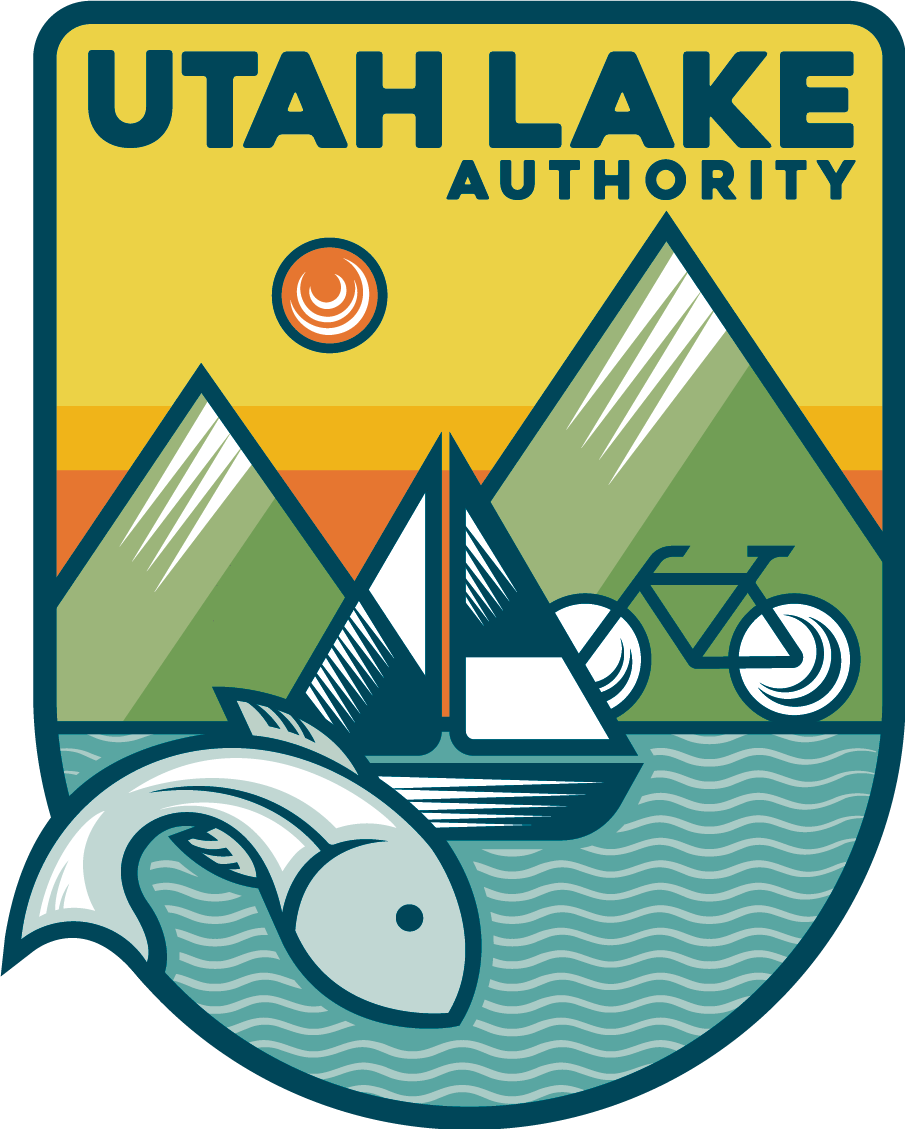How are carp removed from Utah Lake?
In the 1880s carp were introduced to Utah Lake to replace the dwindling number of native fish, including Bonneville cutthroat trout, and to provide locals with a hardy fish that was a popular food in other areas of the world. The carp had long-lasting, negative impacts on the lake and its native fish community because they destroyed cover that provided protection for small fish from their predators. The carp’s aggressive foraging habits eventually destroyed the pondweed on the surface and the plant life on the lake floor. This directly impacted the native fish population. Carp also reproduce and grow faster than June sucker. Because June sucker grow slower, they remain vulnerable to predators longer. In the early 2000’s, carp made up more than 90 percent of the biomass (weight) of fish in the lake. Since then, the June Sucker Program has removed over 35 million pounds of carp.
How much carp is being removed?
The removal project began in September of 2009 and has removed a cumulative amount of just over 35 million pounds of carp. Each year, the JSRIP had a goal of removing 3.5 million pounds of carp each year until 2018. Since then, due to a significant reduction in population, the target each year has been reduced to 1 million pounds.
Is there an end in sight for carp removal?
Since the beginning, the project’s goal was to maintain intensive fishing for carp until 2018 and then reduce the fishing to a maintenance schedule. This maintenance schedule has been implemented and is significantly reduced from the intensive fishing and should keep the carp population levels low. Meanwhile, the June Sucker Program is working to restore vital habitat in the Provo River Delta Restoration Project that started construction in March 2020 and continues to work toward innovative solutions to restore the endangered June sucker.
Are fish from Utah Lake safe to eat?
Yes, you can eat the fish from Utah Lake. There are many species of fish you can catch, and many are described as tasty. There is a fish advisory for PCBs for the carp and catfish, recommending limiting consumption. More details here: DEQ Fish Advisories
What is the June sucker?
The June sucker, named for its annual June spawning run, is endemic to Utah Lake. This means there are no other places in Utah or the world where June sucker live naturally. The species was listed as endangered in 1986, and efforts are underway to recover the species. For more information about this fish and efforts to help it recover from its endangered status, visit the June Sucker Recovery Implementation Program’s website.
Why does the June Sucker need to be saved?
There were 13 native fish species that originally inhabited Utah Lake. Only the June sucker and the Utah sucker are still present. One species, the Utah Lake sculpin is considered extinct with the last specimen collected in 1928. The Bonneville cutthroat trout are primarily restricted to headwater streams. The least chub, native only to Utah and once abundant along the Wasatch Front, persists only in a small population in north Juab Valley and a few areas of the West Desert. The Bonneville redside shiner, mottled sculpin, leatherside chub, Utah chub, speckled dace, longnose dace, mountain whitefish, and mountain sucker are no longer in the lake but still exist in tributaries. All other species of fish present in Utah Lake were introduced intentionally as a food source or for recreational angling and compete with or prey upon the native fish.
Why is the water so murky?
The major source of the murkiness in Utah Lake has to do with the mountains that surround the lake, especially those on the east side. These mountains are made up of mostly limestone, which contains a lot of calcium carbonate, the same thing as chalk. When the water flows down over and through these mountains, it transports the calcium carbonate to Utah Lake where it concentrates to the point that the water looks a little “milky” or “murky.” The sediments resting on the lake bottom are then stirred up by wind-created waves and large bottom-feeding fish like carp. There are also other things in the water that add to the murkiness, like algae and tiny bits of plant matter that wash in, but mostly, the calcium carbonate gives the lake its special look.
Are algae blooms toxic?
Not all blooms become toxic, we still don’t understand why toxins are produced sometimes and not other times. But we do know that if blooms don’t occur, toxins won’t be produced in amounts that could hurt us. If a bloom is occurring, it’s a good idea to stay out of the water even if we don’t know whether it’s toxic or not.
What causes harmful algal blooms?
A combination of factors contributes to harmful algal blooms. They are the same things that help plants grow in the spring: warm temperatures, ample sunlight, and plenty of algae food (phosphorus and nitrogen that we call “nutrients”). Some of these things we can control, like how much nutrients we add to the water. Other things we can’t control, like the weather. We can be very certain that the temperatures will get warm and the sun will shine, especially in the late summer and early fall when these blooms usually happen. Researchers continue to work to better understand how these factors interact to create harmful algal blooms.
Read our blog post to learn more.
What are the sources of nutrients to Utah Lake?
There are many sources of nutrients, some natural (eroding of rocks, wildlife excrement) and some from humans (fertilizer, wastewater, livestock waste). The natural sources have been here since before humans began to settle the area and will continue as long as water continues to flow into the lake. These sources are generally small compared to the sources coming from humans who now live in the area. As the area continues to grow in population, more nutrients will be added to the lake, unless the wastewater, stormwater, and agricultural runoff is cleaned up more before it’s released back to the lake.
Should I be concerned when I see algae at Utah Lake and other reservoirs?
Not necessarily, algae are an important part of the lake ecosystem and provide food for the insects that fish rely on to survive. It’s only when the algae get thick and noxious that it becomes a problem for people and the fish that live in the water. There is also a specific kind of algae called “blue-green algae” that is especially concerning for people, pets, livestock. and wildlife, as it can produce harmful toxins and cause rashes, skin and eye irritation, allergic reactions, gastrointestinal upset, and other effects. You can usually tell when a blue-green algae bloom is occurring in that it will look like someone has poured blue-green paint in the water.
What causes algae to grow in a reservoir?
The same things that cause plants to grow on the land cause algae to grow in the water: sunlight, warm temperatures, and nutrients.
Is raw sewage ever discharged into Utah Lake?
Before wastewater treatment plants were built during the mid-20th century, raw sewage was discharged into Utah Lake, but today all sewage is treated before being released back into the environment.
Why is Utah Lake so low on occasion?
The level of Utah Lake is primarily affected by climate but is also affected by water use from the lake and its tributaries. Utah Lake drains 3,846 square miles of land, and the precipitation over this area varies from year to year. On average, about half the water that flows into the lake is lost to evaporation. In successive years of warm, dry conditions, the use and evaporation from the lake exceed the inflow to the lake, causing the lake level to go down.
Where does Utah Lake water come from?
The water that enters Utah Lake arrives from a variety of locations. Water comes from a variety of locations east of the lake, as far away as Trial Lake. For more information about how Central Utah Water Conservancy District helps manage the water in Utah Lake, check out their website or call 801-226-7100.
What is necessary to produce a good spring runoff into Utah Lake?
Snowpack produces the vast majority of all streamflow into Utah Lake, around 98% or more, with summertime precipitation producing the remainder of annual flow. Thus, above average mountain snowpack is the single most critical factor producing above average inflows to the lake.
– Julander and Clayton. Toward a greater understanding of Utah snowmelt hydrology, Proceedings of the Western Snow Conference, 2017.
What is snow water equivalent (SWE)?
Snow water equivalent (SWE) is the amount of water that would be released if the snowpack were instantly melted in place. SWE is important, as it is relational to the amount of water that will come down Utah’s rivers and streams as the snow melts.
Check out more details about snowpack at the KSL Snow Pack Levels
What area of the mountains has snow that goes to Utah Lake?
The vast majority of Utah streamflow is snowmelt in origin. Areas of the watershed that hold the most snow and are close to a stream channel, such as north aspects higher than 8,000 feet, produce far more water than areas remote from stream channels or on southern aspects. Elevations below 7,500 feet produce little flow regardless of aspect. Aspens and meadows produce greater streamflow than coniferous forests.
-Julander and Clayton. Toward a greater understanding of Utah snowmelt hydrology, Proceedings of the Western Snow Conference, 2017.
Below is a list of the spots checked with snowpack in our watershed that are upstream from Utah Lake:
Trial Lake
Snowbird
Mill D North
Clear Creek
Brighton
Redden Mine Lwr
Beaver Divide
Lookout Peak
Timpanogos Divide
Payson R.S.
Daniels Strawberry
Cascade Mountain
Clear Creek
Parleys Summit
Hobble Creek
Dry Fork
Louis Meadow
Who owns the water in Utah Lake?
All waters in the state are the property of the public, subject to the existing rights to the use thereof (Utah Code Sec. 73-1-1) https://le.utah.gov/xcode/
How do water rights affect Utah Lake?
There are numerous water right owners directly on Utah Lake as wells as on tributaries to Utah Lake, such as the American Fork, Provo, and Spanish Fork rivers. The direct use and storage of this water affect the amount of water in Utah Lake. Some water users also import water from the Weber and Duchesne river systems, which adds water to the lake. The State Engineer and several appointed river commissioners regulate the diversion of water from Utah Lake and its tributaries to ensure senior water right holders are protected in accordance with the principle of prior appropriation, sometimes referred to as “first in time, first in right.” This is done in accordance with the Utah Lake Distribution Plan adopted by the State Engineer in 1992. http://waterrights.utah.

